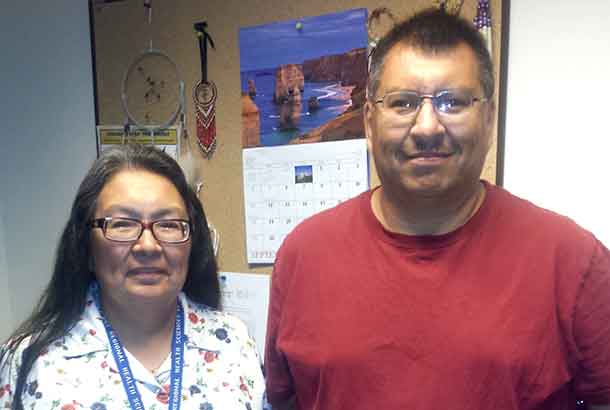

Kitchenuhmayooosib Inninuwug – When Steven Louis Chapman from Kitchenuhmaykoosib Inninuwug (KI) First Nation was first diagnosed with kidney failure, he did what most other residents from remote, northern communities have done before him – moved to Thunder Bay for treatment. Now, thanks to the joined efforts of our Hospital, his community, and the Ontario Renal Network, Chapman has been able to return home to rejoin his family and community while he continues his treatment.
Usually, home hemodialysis is set up in the patient’s home, which requires a fair amount of space and resources. That wasn’t an option for Chapman’s house, so his community became involved, and with the help of Cancer Care Ontario and the Ontario Renal Network, a dialysis self care space was built in the community’s senior centre.
“This is a really great accomplishment for everyone involved. It would not have been possible without the partnerships between Cancer Care Ontario and the Ontario Renal Network, the Northwest Regional Renal Program and our Health Sciences Centre, KI First Nation, and the patient,” said Aaron Skillen, Regional Director, Northwest Regional Renal Program. “It’s a great example of our commitment to Indigenous health, and our goal to deliver care closer to home. I applaud the Northwest Regional Renal Network’s commitment to the Ontario Renal Plan’s goal of improving patient access, specifically for remote and isolated Indigenous patients. ”
“From a cultural standpoint, it is particularly important for our Indigenous patients to remain connected to their families and community,” said Kanita Johnson, the Indigenous Patient Liaison in the Hospital’s Renal Program. “This self care space has the potential to help many more patients from KI stay home for their treatments, keeping those connections intact.”
Bringing care closer to home is part of our commitment to deliver the best quality of care to our entire region. “This accomplishment showcases that care doesn’t always need to be delivered within our walls here at the Health Sciences Centre,” said Mary Wrigley, Manager of our Regional Renal Program. “Many patients administer their own dialysis throughout Northwestern Ontario, and we work with them to manage their care from a distance. We maintain a strong connection to all of our patients and their care plans, and we’re always just a phone call away.”
The idea to pursue the self care space in KI came from the patient’s needs and desire to stay home. “We work hard to support our patients by providing them with the relevant information regarding their treatment, and carefully explaining all of their options. If the patient is motivated to stay in their home or community, and it is medically safe for them to do so, then we will do whatever we can to make that a reality,” explained Wrigley. “It’s part of our Patient and Family Centred Care philosophy to ensure that our patients are involved in and ultimately choose their treatment plans. Unfortunately, self managed home dialysis isn’t always possible. We’re thrilled that it worked out so well in this situation.”
Maryanne Matthews






